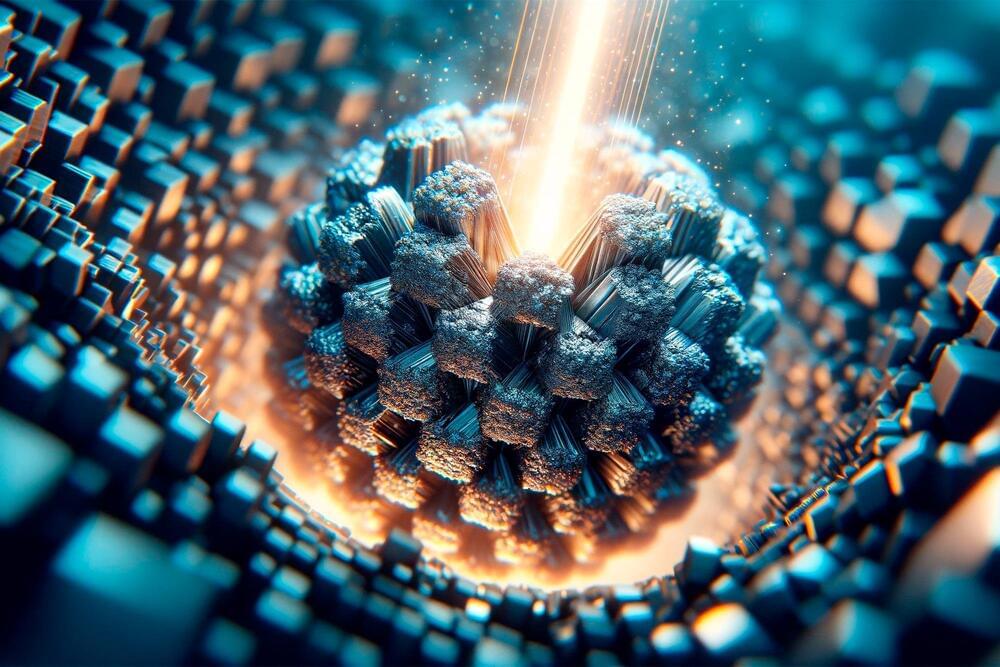A kidney stone is a solid piece of material that can form in one or both of your kidneys when high levels of certain minerals are in your urine. There are several different types of kidney stones with different causes and symptoms.
Archive for the ‘materials’ category: Page 51
Jan 5, 2024
Berkeley Lab Researchers Explore Superconductivity Potential of LK99
Posted by Genevieve Klien in categories: computing, materials
In an exciting development, researchers at the Lawrence Berkeley National Laboratory (Berkeley Lab) have made significant strides in the exploration of a material known as LK99 and its potential for superconductivity. This innovative research, rooted in computational methods, has stirred the scientific community, despite initial skepticism. Their determined investigation into the optimization of LK99 as a superconductor holds promise for a scientific breakthrough, shedding light on the persistent nature of scientific research and the pursuit of knowledge.
Unraveling the Mysteries of LK99
Scientists at Berkeley Lab have been delving into the possibilities held by LK99, a material identified as a candidate for superconductivity. Their computational work suggests that through careful optimization, LK99 can indeed function as a superconductor. This breakthrough is the result of a relentless commitment to scientific exploration and the willingness to challenge conventional wisdom.
Jan 5, 2024
LK99 returns: China echoes earlier claim of room temp superconductors
Posted by Gemechu Taye in category: materials
Researchers claim they have achieved the unachievable – the discovery of a near-room-temperature superconductor.
There’s a new group of scientists who claim to have discovered a near-room-temperature superconductor, a claim that garnered much social media and tech nerds’ attention back in August 2023.
Jan 5, 2024
High‐Strength Amorphous Silicon Carbide for Nanomechanics
Posted by Saúl Morales Rodriguéz in category: materials
Advanced Materials, one of the world’s most prestigious journals, is the home of choice for best-in-class materials science for more than 30 years.
Jan 4, 2024
New insights on how light interacts with magnets for better sensors and memory tech
Posted by Shailesh Prasad in categories: materials, particle physics
Professor Amir Capua, head of the Spintronics Lab within the Institute of Applied Physics and Electrical Engineering at Hebrew University of Jerusalem, announced a pivotal breakthrough in the realm of light-magnetism interactions. The team’s unexpected discovery reveals a mechanism wherein an optical laser beam controls the magnetic state in solids, promising tangible applications in various industries.
“This breakthrough marks a paradigm shift in our understanding of the interaction between light and magnetic materials,” stated Professor Capua. “It paves the way for light-controlled, high-speed memory technology, notably Magnetoresistive Random Access Memory (MRAM), and innovative optical sensor development. In fact, this discovery signals a major leap in our understanding of light-magnetism dynamics.”
The research challenges conventional thinking by unraveling the overlooked magnetic aspect of light, which typically receives less attention due to the slower response of magnets compared to the rapid behavior of light radiation.
Jan 3, 2024
Tailoring graphene for electronics beyond silicon
Posted by Dan Breeden in categories: electronics, materials
Jan 3, 2024
Gold-laced gel could help you recover from a major muscle injury
Posted by Shubham Ghosh Roy in categories: materials, nanotechnology

A combination of electrical stimulation and a gold nanoparticle-laced hydrogel could one day help people recover from major muscle injuries.
Dec 31, 2023
Collaborative review unveils the potential of graphene in advancing nitride semiconductor technology
Posted by Dan Breeden in categories: chemistry, materials
In a comprehensive review, researchers from Soochow University, Beijing Graphene Institute and Xiamen Silan Advanced Compound Semiconductor Co., Ltd. have collaborated to provide a systematic overview of the progress and potential applications of graphene as a buffer layer for nitride epitaxial growth.
The paper brings together perspectives from academia, research institutions, and semiconductor industry professionals to propose solutions for critical issues in semiconductor technology.
Graphene, a two-dimensional material known for its exceptional electrical and mechanical properties, has garnered significant interest for its prospective use in the growth of nitride semiconductors. Despite notable advancements in the chemical vapor deposition (CVD) growth of graphene on various insulating substrates, producing high-quality graphene and achieving optimal interface compatibility with Group III-nitride materials remain major challenges in the field.
Dec 31, 2023
Quantum state of matter made with ‘dipolar’ molecules for first time
Posted by Shailesh Prasad in categories: materials, quantum physics
A quantum state of matter comprising molecules with opposite charges at each end has been made for the first time. It could help probe our understanding of the quantum properties of exotic materials.
Dec 30, 2023
Quantum Leap in Graphite: Attoscience Lights the Way to Superconductivity
Posted by Saúl Morales Rodriguéz in categories: futurism, materials
Advancements in attosecond soft-X-ray spectroscopy by ICFO researchers have transformed material analysis, particularly in studying light-matter interactions and many-body dynamics, with promising implications for future technological applications.
X-ray absorption spectroscopy is an element-selective and electronic-state sensitive technique that is one of the most widely used analytical techniques to study the composition of materials or substances. Until recently, the method required arduous wavelength scanning and did not provide ultrafast temporal resolution to study electronic dynamics.
Over the last decade, the Attoscience and Ultrafast Optics group at ICFO le, d by ICREA Prof. at ICFO Jens Biegert h, has developed attosecond soft-X-ray absorption spectroscopy into a new analytical tool without the need for scanning and with attosecond temporal resolution.[1,2].














